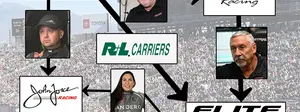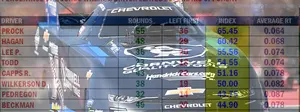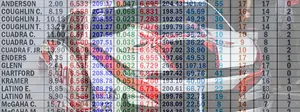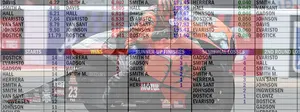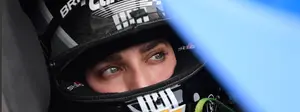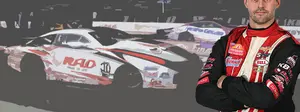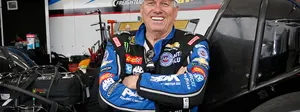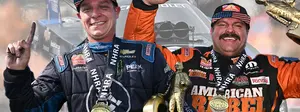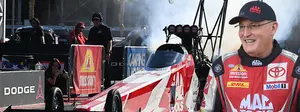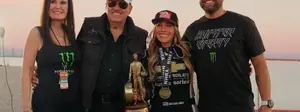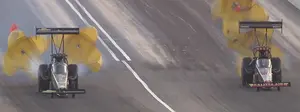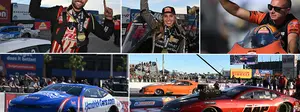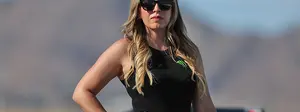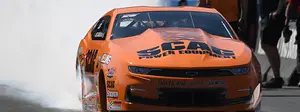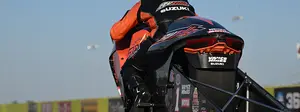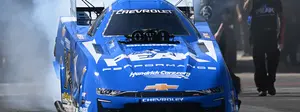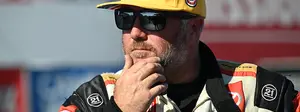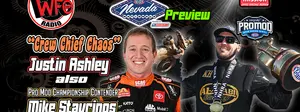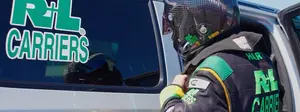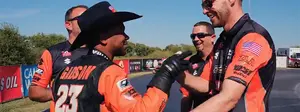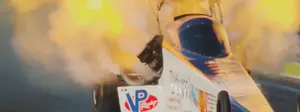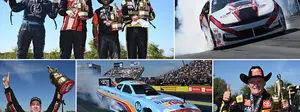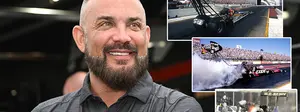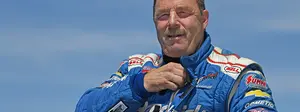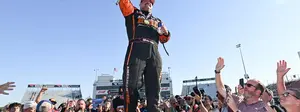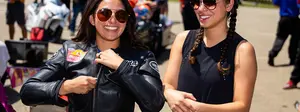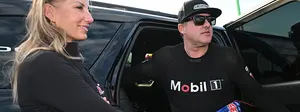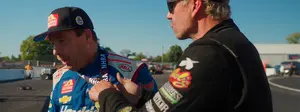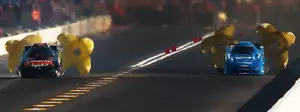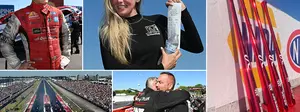

Reliving NHRA's first race: the 1955 National Championship Drags in Great Bend

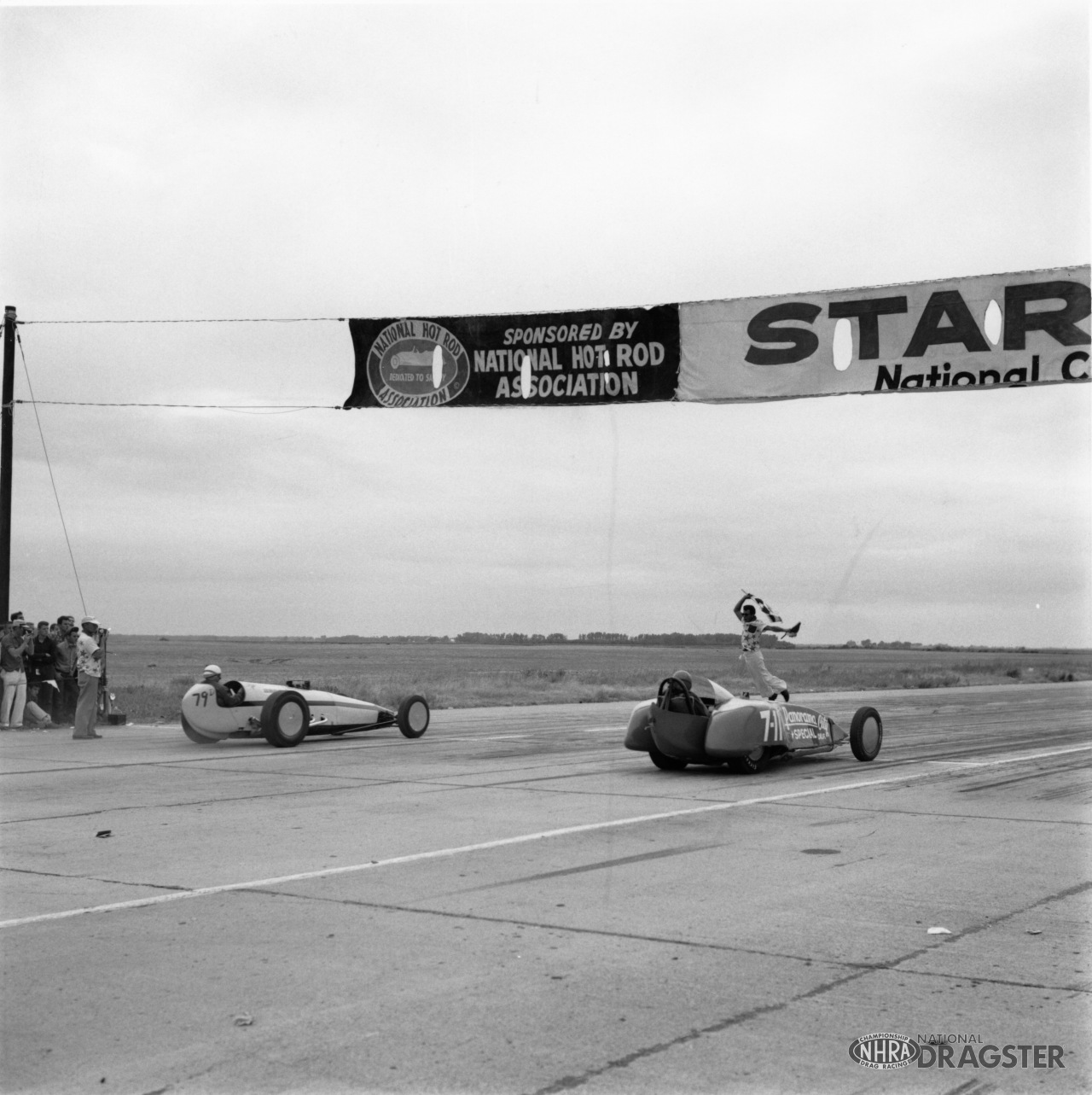
























































































































In the August 1955 issue of Hot Rod, early into the Drag Safari's second tour of America, Great Bend, Kan., was announced as the site of the first NHRA National Championship Drags. An 8,000-foot runway at the Great Bend Municipal Airport would accommodate the nation's fastest dragsters over the four-day event, slated to run Thursday, Sept. 29 through Sunday, Oct. 2, and sponsored by NHRA and Mobilgas and run in conjunction with the Sunflower Rod & Custom Association.
Competition was to take place in 30 classes, encompassing NHRA's regular 27 divisions — Gas Coupes/Sedans, Altered Coupe/Sedans, Fuel Coupe/Sedans, Competition Coupe/Sedans, Street Roadsters, Roadsters, Hot Roadsters, Modified Roadsters, Open Gas, Dragsters, and Stock cars — plus one class for four-cylinders and two for gasoline-powered sports cars. Trophies were to be awarded to all class winners, for National Record holders in all classes, for fastest speed, and, the biggest award of all, the Top Eliminator National Championship.
Thursday and Friday were reserved for time trials, with Saturday the planned eliminations day, followed by Sunday's Official National Record Runs for Quarter-Mile Acceleration Runs. The entry fee was a mere $5.
The event was a huge hit, as entries poured in from coast to coast and major automobile industries dispatched engineering, sales, production, and public relations experts to the event. Press clippings covering the event were received from as far away as Hong Kong.
Art Chrisman's Chrysler-engined #25 dragster set the first real top speed of the meet when his second run of the opening day netted a speed of 145.16 mph in 10.98 seconds. That speed remained the meet's fastest until Lloyd Scott fired up his fabled Bustlebomb dual-engined dragster, sponsored by Howards Cams and Weiand Racing Equipment (and also named "Best Constructed"), and turned 151.00 and, later, low e.t. of 10.48 seconds. Calvin Rice, winner of the first Regional of the year, in Colton, Calif., was in high form in his slick-looking dragster, now painted a glistening yellow and black and its flanks bearing the name "J.E. Riley & Son Spl," with sponsorship from Riley's construction company. From the cockpit that was formed from the inverted tail of a sprint car, Rice turned 143 mph.
Future Division 4 Director Dale Ham won the "C" Street Roadster class over former Hot Rod cover-car subject Helen Root, and "Jazzy Jim" Nelson had the meet's fastest coupe, the "Edelbrock & Iskenderian Spl." Mercury-powered Fiat coupe, which ran 132.93 mph in an impressive 10.90 seconds to take the "A" Competition Coupe honors. Other instantly recognizable class champions were Howard Johansen in "C" Gas Coupe, Leland Kolb in "A" Roadster, Bob Armstrong in "C" Fuel Coupe, Larry Shinoda in "A" Hot Roadster, Raymond Godman in "A" Modified Roadster, and Buddy Sampson in the Four Cylinder class.
The rigid pre- and post-race inspections by the NHRA team stunned some who had never competed at an event under NHRA's controls. Safety concerns that may have been overlooked at an individual's home track were red-flagged by NHRA's team in pre-race, and the post-race inspection of winners resulted in several disqualifications, most notably in the Stock classes. In one class, the first three finishers were found to be running "out of class." As a result, no records were set in A thru D Stock classes and only two eliminator winners, in B and D, were crowned, to Arnie Beswick and Ken Peek, respectively. The matter of disqualifications was of great concern to NHRA officials, who vowed to correct the problem for future events.
By the end of the meet's third day, six dragsters — three from California and three from Texas — were still in contention for the class championship as well as the National Championship (and the five-foot-tall Mobilgas trophy), which was to pit the winners of the three fastest classes. Unfortunately, the worst rainstorm in 30 years hit Great Bend that evening, washing out Sunday's final runs as well as the planned record runs. It was decided that the event would conclude Nov. 19-20 at the Southwest Regional Championship in Phoenix, a neutral site.
The dragsters still in competition — Scott's "Bustlebomb," Rice's flat head Mercury entry, and the famed "Bean Bandits" from California and Texas' Jack Moss and his "Ramblin' Ram," John Mulkey in Chuck Adams' "Equa-Flow Special," and the "Motor Reco Special" — would determine a winner, then enter into a three-way battle with Jazzy Nelson's coupe and Fred Voight's Chrysler-powered dragster, winner of the Open Gas class.
The disappointment of having to wait nearly two months to crown a national championship was outweighed by the drama of the final runs on the 4,000-foot asphalt runway in Perryville, just outside of Phoenix.
Rice opened with a first-round 10.90 at 141.28 to send the Bean Bandits home to San Diego and Moss then became the first driver to ever defeat the Bustlebomb, sending Scott down to defeat with an 11.11, 135.33.
Voight and Nelson lined up next to see who would face the winner from the dragster class for National champion honors. The two had run nearly identical elapsed times in Great Bend, but this one was all Voight with a stunning 10.91 at 131.57 mph.
Rice returned to the starting line to face Mulkey and stepped way up to a 10.54, 141,95 victory to move closer to the title run, then defeated giant killer Moss with an even quicker 10.44, again at 141.95, to advance to the National Championship final against Voight.
Rice and Voight lined up three times, with three foul starts. Accounts of the action disagree, with either first Voight then Rice each jumping the start or Voight committing two straight fouls. Either way, the races were waved off as "no-go" and the contestants returned to the starting line to try again.
On the third try, both drivers jumped the flag start and Rice's transmission blew. The race had already been waved off by starter Paul Wallace as another "no-go," meaning Voight could not claim the trophy by default.
The crack Riley crew, led by Chuck Webster and Mel Dodd, were given 30 minutes to repair, and leaped into action, bolting in a new transmission … which didn't fit. A reworked Ford tranny was bolted into place with nary a moment to spare. The team didn't even have time to adjust the clutch linkage. Rice had to scoot down deep into the seat and work the clutch with the tip of his toe to make the shift in the final, which he took in10.30 seconds at 141.95 mph, overcoming Voight's early lead to make the 25-year-old resident of Santa Ana, Calif., NHRA's first national champion.























